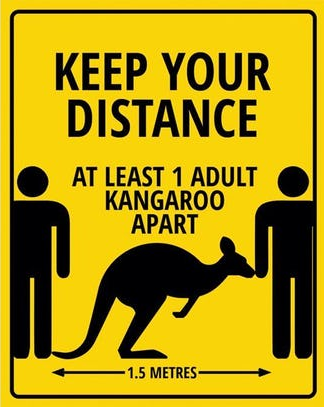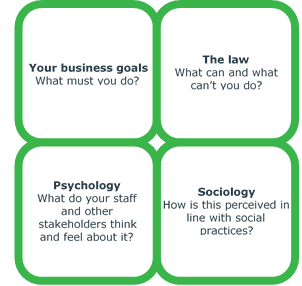
07 – Roadmap to the new normal and bringing people back to work
Where the jobs are, and other useful things to know and do for all the employers, contractors and job seekers in the Spinifex community

This week is about re-entry into the new world.
We all know it’s going to be a bumpy ride.
So, in this update, we cover some of the things we’re planning to minimise the turbulence and ensure a safe landing:
The roadmap to relaxing restrictions
What the new normal will look like at work
Risks and opportunities in preparing to bring people back to work
But first, let’s take a look at where the jobs are

Ballina | Sydney – Alexandria, Inner West |
Lismore | Parramatta, Silverwater |
Mudgee | Kempsey |
Orange | Wagga Wagga |
Parkes | Tamworth |
For more information, take a look at our current job opportunities https://spinifexrecruiting.com.au/jobs.php
Also check out the Australian Government Jobs Hub https://www.dese.gov.au/covid-19/jobs-hub
The roadmap to relaxing restrictions
The Prime Minister has unveiled a three-stage plan for re-entry into the new world.
The bottom line is that the coronavirus will continue to be a part of our lives at home and at work. There will still be a curve to flatten and we will still need to keep the COVID growth factor under the magic number of one.
This means social distancing, high levels of hygiene, testing, tracing and isolation when required will now be ‘business as usual’.
The end goal is worth it: a COVID-safe economy and society.
However, we need to be mindful that it will be harder for some people than others. As restrictions diminish, so will support structures such as the JobKeeper program. History shows us that some of the jobs and businesses lost in a big downturn may never reappear. This requires reskilling and rethinking.
It also requires us to continue to help each other adapt. To collaborate. To co-operate. To be kind.
For more information on the national 3-step plan see https://www.pm.gov.au/media/update-coronavirus-measures-08may20
For more information on rule changes in NSW see https://www.nsw.gov.au/covid-19/what-you-can-and-cant-do-under-rules
What will the new normal look like at work?

OK, so no one is recommending we bring kangaroos into the office to help us keep our distance.
Here are some of the expert predictions we’re taking more seriously:
Working from home – dream versus reality
Research conducted by Stanford’s Centre for Future Work indicates about 30% of Australian workers (4 million, predominantly white-collar workers) have capacity to work from home.
The reality is that many of them no longer want to. The last few months have been an experiment in work:life integration and many of us have discovered it’s not all it’s cracked up to be. A lot of people are eager to return to their workplace.
Having said that, there will be no more coming into work feeling just “a little under the weather” with mild cold or flu symptoms. We will need to be prepared to work from home if required.
Key questions here are: What does this mean for the 70% of people who cannot work from home? What does this mean for workplaces where productivity relies on people working when they are not 100% well?
Space, distance and virtual hugs
We will need to adapt our office spaces to enable us to keep 1.5 metres away from each other and allow for 4 metres of space per person.
Large meetings and training, in fact, any large gatherings of staff will need to continue to be virtual or postponed.
Contactless transactions will be the go. So now is the time to learn about voice and facial recognition technologies that might help us do our business more safely.
Time management
We have to think about staggering breaks, start times and finish times to avoid congestion, not only in the office but also on public transport.
Flexibility and trust will be critical.
Cleaning at a level never seen before
Hand sanitiser and disinfectant wipes will be standard office tools.
Workplaces will have to be cleaned at least daily using detergent, and disinfected as needed, depending on how high-traffic the area is.
If fresh air is not available, air conditioners will have to be tested to ensure optimum air quality.
Buying local
We’re going to have to reduce our dependency on international supply chains. At least in the short term.
This means taking a look at where our goods and services come from and sourcing from local providers where possible.
For more information on standards we must adhere to, see the National COVID-19 Workplace Principles https://www.safeworkaustralia.gov.au/covid-19-information-workplaces/other-resources/national-covid-19-safe-workplace-principles
Risks and opportunities in preparing to bring people back to work
Andrew Egan, our Regional Operations Group Manager based in Bathurst, reports on some lessons learned over the past few months

“There’s no quick and easy fix to bringing people back to work”, Andrew says. “But there is a simple compass we can use to guide us: it’s all about people and what motivates us.
“It’s been a humbling, yet energising experience over the past few months.
“When the reality hit, I saw many people, myself included, put aside more-lofty goals and return to basic needs: stay safe, keep our jobs, keep a roof over our heads.
“These simple drivers translated into renewed energy. I’ve seen great examples of adaptation. Clients innovating. Increased collaboration between public and private sectors. Extraordinary agility by state governments and industry councils.
“Underscoring all this energetic effort was a heightened level of care for each other. This was really refreshing, and I believe we would all benefit if that continued.
“Now, we’re at a turning point. The fear, uncertainty, even novelty is wearing off, and we’re all eager to get things moving again. The risk is we might forget some of the valuable lessons learned.”
This view was reinforced by a recent People & Culture Strategies Labour & Employment Law seminar about Reintegration, Andrew attended.
The seminar outlined a quadrant framework to guide decision-making in bringing people back to work, which balances systemic changes with human needs:

It also covered considerations which both employers and employees need to think and talk about when planning for re-entry, including:
Have you accepted the new normal?
What is the impact on systems and structures?
What needs to be adapted to create a safe workplace that is compliant with National Work Safe Principles?
Will the way you measure performance change?
Is there a change needed to your employee terms and conditions, such as working hours?
How will you deal with recruitment, induction and onboarding?
How will you deal with appraisals and reviews?
How will you bring your stakeholders along on the journey with you?
What things will have to be ‘parked’ and for how long?
How will you support mental health and wellbeing? Not only for staff, but also yourself?
“We need to have answers to all these questions,” says Andrew.
“They are the parachutes which will give us the safe landing we all want.
“Here at Spinifex we’ve been in a good position. Our business model, systems and processes were robust enough to withstand the tests of the COVID environment. But that doesn’t mean there aren’t some things we can and should do better.
“The re-entry to the new normal is an opportunity to do that.”
No time for ambiguity, weasel words or covering one’s own a%$e
Next update, we’ll take a look at the importance of clarity of communications during times of change.
Until then, stay safe.
Scott C Small | Victoria Bila |
Managing Director | Group Manager – Operations |
| |
Andrew Egan | Damien O’Donnell |
Group Manager – Regional Operations | Group Manager – Regional & Executive |
Download PDF version of this update
